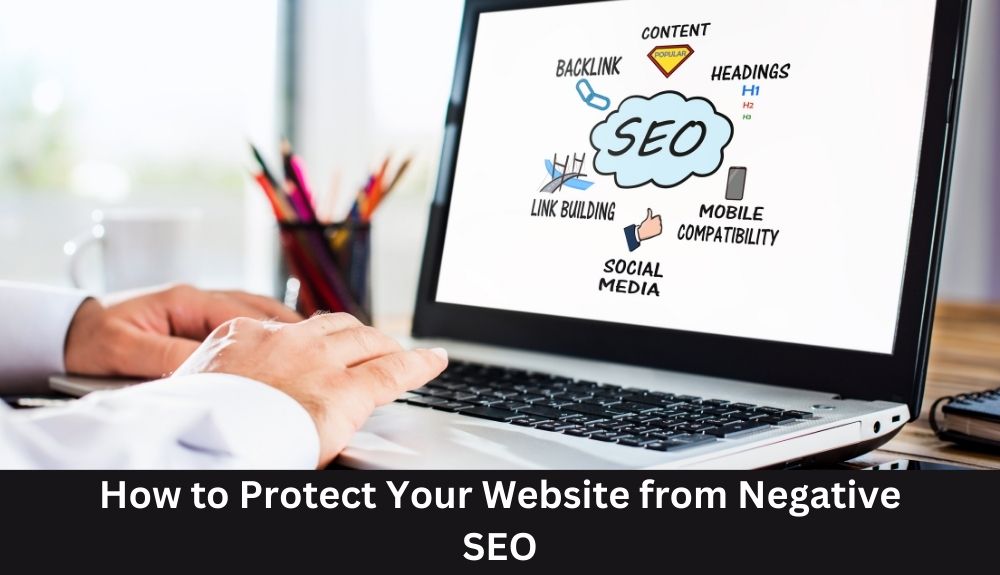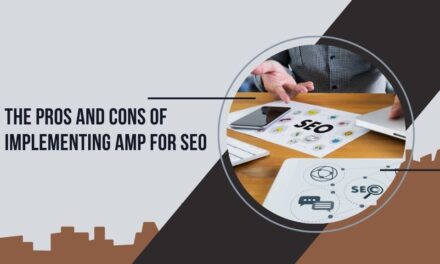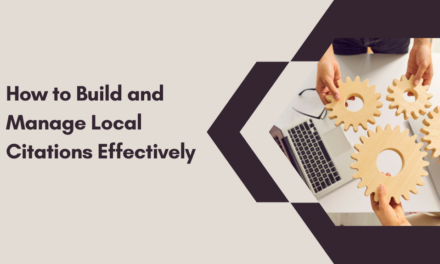Are your website’s rankings suddenly dropping for no apparent reason? Have you noticed a surge in toxic backlinks pointing to your site? You might be under attack from Negative SEO. In this blog post, we will dive into the world of malicious tactics aimed at sabotaging websites and provide you with valuable insights on how to safeguard your online presence. Let’s explore the dark side of SEO and learn how to defend your website against harmful attacks!
Understanding Negative SEO
Negative SEO is the underbelly of search engine optimization, where unethical practices are used to harm a competitor’s website. These tactics aim to manipulate search engine algorithms and penalize sites unfairly. By employing techniques such as creating spammy backlinks, duplicating content, or hacking websites, malicious actors can wreak havoc on your online presence.
Understanding Negative SEO is crucial for any website owner to protect their digital assets from potential harm. It’s essential to stay vigilant and proactive in monitoring your site for any signs of suspicious activity that could indicate an attack. By being aware of these deceitful strategies, you can fortify your defenses and prevent your hard-earned rankings from being jeopardized by nefarious forces lurking in the shadows.
Stay informed about the latest trends and developments in the world of SEO so that you can identify and combat negative tactics effectively. Remember, knowledge is power when it comes to safeguarding your website against malicious attacks aimed at undermining your online success.
Types of Negative SEO Attacks
Negative SEO attacks come in various forms, all aimed at harming your website’s search engine rankings and online reputation. One common type is the creation of toxic backlinks pointing to your site. These are low-quality links from spammy or irrelevant websites that can trigger Google penalties.
Another sneaky tactic is content scraping, where malicious individuals copy your content and publish it on multiple sites to dilute its uniqueness and authority. This can lead to duplicate content issues and a decrease in organic traffic.
Keyword stuffing is another negative SEO strategy where competitors overload your website with keywords to trigger search engine penalties for over-optimization. This can harm your site’s credibility and result in lower rankings.
Hacking attempts are also prevalent, with cybercriminals trying to gain unauthorized access to your website to inject malicious code or malware that could get your site blacklisted by search engines. It’s crucial to stay vigilant against these types of attacks by implementing strong security measures on your website.
Signs of a Negative SEO Attack
Have you noticed a sudden drop in your website’s search engine rankings? Or maybe an unusual surge in toxic backlinks pointing to your site? These could be signs of a negative SEO attack lurking behind the scenes.
Another red flag to watch out for is a noticeable decrease in organic traffic without any apparent reason. If your site is being targeted by malicious tactics like keyword stuffing or content scraping, it can significantly impact your online visibility.
Pay close attention to any strange fluctuations in your website’s performance metrics, such as sudden spikes in 404 errors or an increase in crawl errors reported by search engines. These anomalies could indicate that someone is trying to harm your website’s reputation through negative SEO techniques.
Keep an eye out for any unauthorized changes made to your site, like hidden text or links injected into your pages without your knowledge. It’s crucial to stay vigilant and regularly monitor these signs of a potential negative SEO attack before it causes irreparable damage.
How to Protect Your Website from Negative SEO

Regularly Monitor and Analyze Your Backlink Profile
One of the key steps in protecting your website from negative SEO attacks is to regularly monitor and analyze your backlink profile. Keep an eye out for any sudden spikes in low-quality or spammy backlinks pointing to your site. Tools like Google Search Console can help you track these changes and take action promptly.
Keep Your Site Secure and Updated
Another crucial aspect of safeguarding your website is to ensure it is secure and up-to-date. Regularly update your CMS, plugins, themes, and security protocols to prevent vulnerabilities that could be exploited by malicious actors engaging in negative SEO tactics.
Use Google’s Disavow Tool to Remove Harmful Links
If you do identify harmful links pointing to your site, make use of Google’s Disavow Tool to disassociate them from influencing your search rankings. This tool allows you to submit a list of URLs you want Google to ignore when assessing the quality of your backlink profile.
Utilize Strong Content and On-Page Optimization Practices
Focus on creating high-quality content and implementing strong on-page optimization practices. By offering valuable information that resonates with users and optimizing technical aspects like meta tags, headings, and image alt text, you can strengthen your website’s overall SEO health while making it less susceptible to negative tactics employed by competitors or spammers.
Regularly Monitor and Analyze Your Backlink Profile
Regularly monitoring and analyzing your backlink profile is crucial in protecting your website from negative SEO attacks. By keeping a close eye on the websites linking to yours, you can identify any suspicious or toxic backlinks that could harm your site’s reputation and ranking.
Tools like Google Search Console and third-party services can help you track new backlinks and assess their quality. Look out for sudden spikes in the number of backlinks, especially from irrelevant or low-quality sites, as these could be signs of a negative SEO attack.
It’s essential to regularly review your backlink profile to ensure it remains clean and healthy. Disavow any harmful links promptly to prevent them from negatively impacting your website’s SEO performance.
Stay vigilant and proactive in managing your backlink profile to safeguard your online presence against malicious attempts to undermine your site’s credibility. Remember: prevention is key when it comes to defending against negative SEO tactics!
Keep Your Site Secure and Updated
Keeping your website secure and updated is crucial in warding off negative SEO attacks. Hackers often exploit vulnerabilities in outdated software to inject harmful code or spammy links onto your site. By regularly updating your content management system, plugins, and themes, you can stay one step ahead of potential threats.
Implementing HTTPS encryption adds an extra layer of security by encrypting data exchanged between users and your website. This not only protects sensitive information but also boosts your search engine rankings. Additionally, using strong passwords, two-factor authentication, and limiting login attempts help prevent unauthorized access to your site.
Regularly scanning for malware and suspicious activities can alert you to any potential breaches before they escalate. Backup your website files regularly so that in the event of a cyber-attack or data loss, you can quickly restore your site to its previous state.
Use Google’s Disavow Tool to Remove Harmful Links
Google’s Disavow Tool is a powerful resource for website owners to combat negative SEO attacks by removing harmful backlinks. By submitting a list of links you want Google to ignore, you can protect your site’s credibility and rankings. It’s essential to regularly review your backlink profile and identify any suspicious or low-quality links that could be damaging your website’s reputation.
Once you’ve identified these harmful links, the next step is to compile them into a disavow file following Google’s guidelines. This file should include all the URLs you wish to disavow, clearly stating why they are detrimental to your site.
After creating the disavow file, submit it through Google Search Console for processing. Keep in mind that this process may take some time, so it’s crucial to monitor your site’s performance before and after using the Disavow Tool.
Remember, prevention is key when it comes to negative SEO attacks. Stay vigilant in monitoring your backlink profile and utilize tools like Google’s Disavow Tool proactively to safeguard your website from potential harm.
Utilize Strong Content and On-Page Optimization Practices

When it comes to protecting your website from negative SEO attacks, utilizing strong content and on-page optimization practices is crucial.
Creating high-quality, relevant content not only attracts users but also helps search engines understand the purpose of your site. By focusing on producing valuable information for your audience, you can increase engagement and build trust.
Optimizing your on-page elements such as meta titles, descriptions, headings, and image alt text can improve your website’s visibility in search results. Make sure to use relevant keywords naturally throughout your content to enhance its relevance.
Regularly updating and refreshing your content shows search engines that your site is active and authoritative. Additionally, ensuring a user-friendly experience by optimizing page speed and mobile responsiveness can positively impact your rankings.
By implementing these practices consistently, you can strengthen the overall health of your website and reduce vulnerability to negative SEO tactics.
Conclusion
It’s crucial to stay vigilant and proactive in protecting your website from negative SEO attacks. By understanding the different types of negative SEO tactics, knowing the signs of an attack, and implementing strong protective measures like monitoring your backlink profile, keeping your site secure, using Google’s Disavow Tool when necessary, and focusing on quality content and on-page optimization, you can safeguard your online presence.
Remember that prevention is always better than cure when it comes to negative SEO. Stay informed, stay alert, and take action to defend your website against any malicious attempts to harm its ranking and reputation. With these strategies in place, you can help ensure that your website remains a safe and reliable asset for both you and your visitors.












